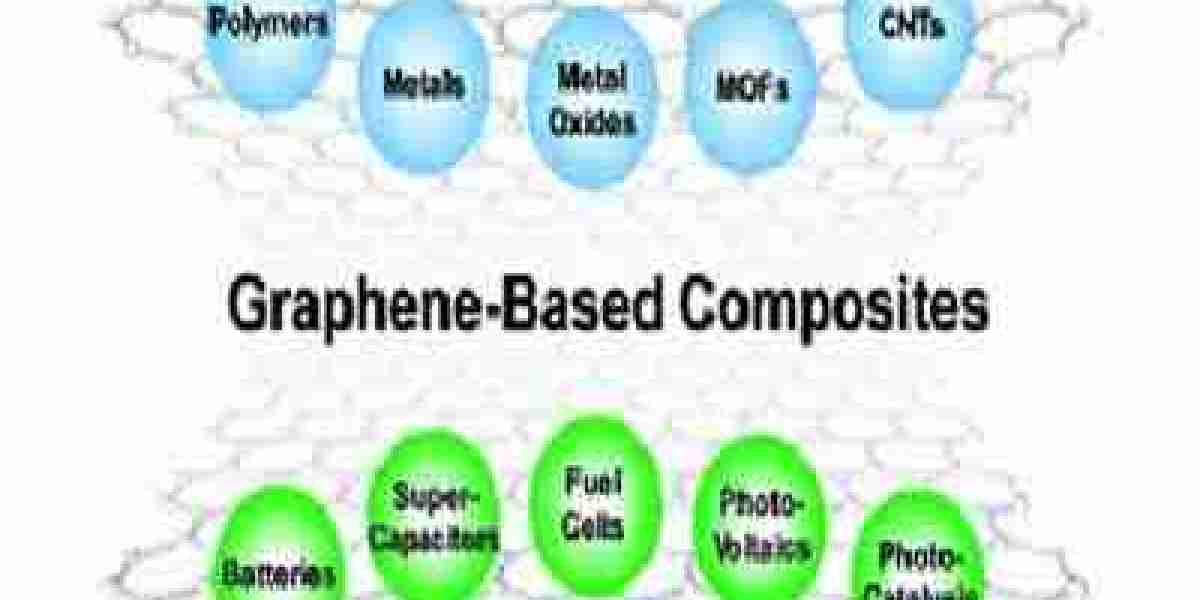Graphene composites are materials made by incorporating graphene, a single layer of carbon atoms arranged in a two-dimensional honeycomb lattice, into various base materials such as plastics, metals, and ceramics. Graphene's remarkable properties, including its high strength, electrical conductivity, and thermal performance, make it an ideal additive for composite materials, providing enhanced performance and functionality. The graphene composites market is gaining traction across industries such as automotive, aerospace, electronics, and energy storage due to the increasing demand for high-performance materials that are both lightweight and durable.
Graphene Composites Market is expected to advance at a CAGR of 32.7% from 2023 to 2031 and reach US$ 178.3 Mn by the end of 2031.
Get A Free Sample Copy of the Report: https://www.transparencymarketresearch.com/sample/sample.php?flag=S&rep_id=45378
Market Overview
The global graphene composites market is witnessing significant growth, driven by the material's unique properties and its ability to improve the performance of traditional materials. Graphene is increasingly being integrated into composite materials to enhance mechanical strength, reduce weight, and improve conductivity. The market is segmented based on application (automotive, aerospace, electronics, energy storage, etc.), type of composite (polymer-based, metal-based, ceramic-based), and region. North America and Europe are currently the dominant markets, while the Asia-Pacific region is expected to see the fastest growth due to increasing industrial activities and technological advancements.
Key Drivers of Growth
Several key factors are driving the growth of the graphene composites market. The increasing demand for lightweight, strong, and durable materials in industries such as automotive and aerospace is a primary growth driver. Graphene composites offer improved fuel efficiency, reduced emissions, and enhanced mechanical properties, making them highly attractive to manufacturers in these sectors. The rising demand for energy storage solutions, particularly batteries and supercapacitors, has also boosted the adoption of graphene-based materials, as they significantly improve the performance of energy storage devices. Furthermore, graphene's unique electrical and thermal conductivity properties are propelling its use in the electronics and semiconductor industries, where there is a continuous drive for smaller, faster, and more efficient components.
Recent Trends
The graphene composites market is evolving rapidly, with several emerging trends shaping its growth trajectory. One key trend is the development of graphene-based materials that are both sustainable and cost-effective. Researchers are focused on optimizing graphene production methods, such as chemical vapor deposition and exfoliation, to make the material more affordable and scalable for commercial use. Another trend is the increasing application of graphene composites in the automotive sector, particularly for lightweighting and improving battery performance. Additionally, there is growing interest in graphene-based coatings and films due to their enhanced durability, corrosion resistance, and conductivity. In the energy storage field, graphene composites are being incorporated into lithium-ion batteries and supercapacitors to improve energy density and charge/discharge rates.
Top Companies:
Haydale Graphene Industries Plc
Graphene Nanochem Plc
NanoXplore, Inc.
Applied Graphene Materials Plc
XG Sciences Inc.
Directa Plus Plc
Graphene Composites Ltd. (GC)
Graphene 3D Lab Inc.
Graphmatech AB
Nano Graphene Inc.
PMG 3D Technologies Company Ltd.
Challenges
While the graphene composites market shows significant potential, several challenges could hinder its growth. One major challenge is the high cost of graphene production, which limits its widespread adoption in commercial applications. The scale-up of production techniques to meet growing demand remains a technical and economic hurdle for many manufacturers. Additionally, the integration of graphene into composite materials requires careful consideration of material compatibility, processing methods, and cost-effectiveness, which can complicate the manufacturing process. The market also faces competition from other advanced materials, such as carbon nanotubes and carbon fibers, which offer similar benefits in terms of strength and conductivity.
Future Outlook
The graphene composites market is expected to grow significantly in the coming years, driven by continuous innovations in graphene production and the development of new applications. By 2030, the market is projected to expand rapidly as graphene-based materials become more affordable and accessible for commercial use. The automotive, aerospace, and energy storage sectors will remain the primary drivers of market demand, while emerging applications in consumer electronics, medical devices, and construction will provide new growth opportunities.
As production methods improve and the cost of graphene decreases, the market will likely see increased adoption across various industries. Furthermore, ongoing research into hybrid graphene composites, which combine graphene with other materials like carbon fibers and nanotubes, will create new possibilities for high-performance materials with superior characteristics. With continued technological advancements and increased focus on sustainable materials, the graphene composites market is set to play a key role in shaping the future of manufacturing across multiple sectors.
Recherche
Messages populaires














